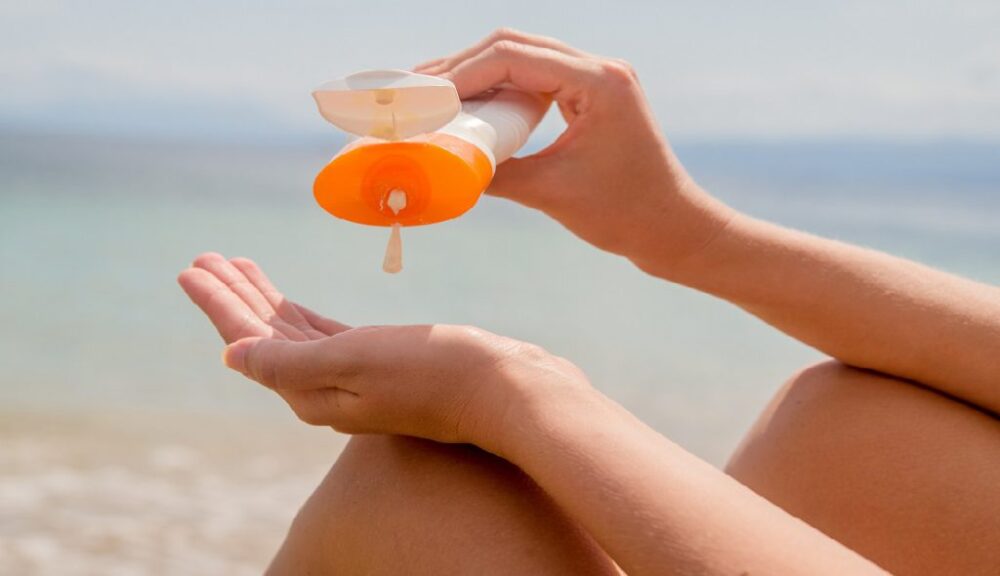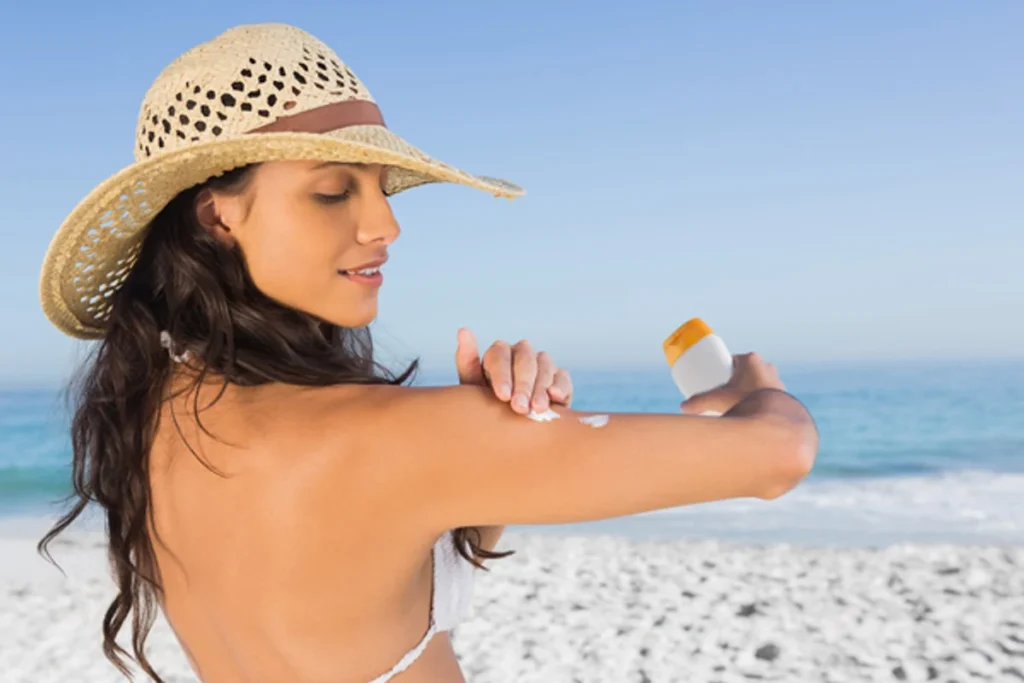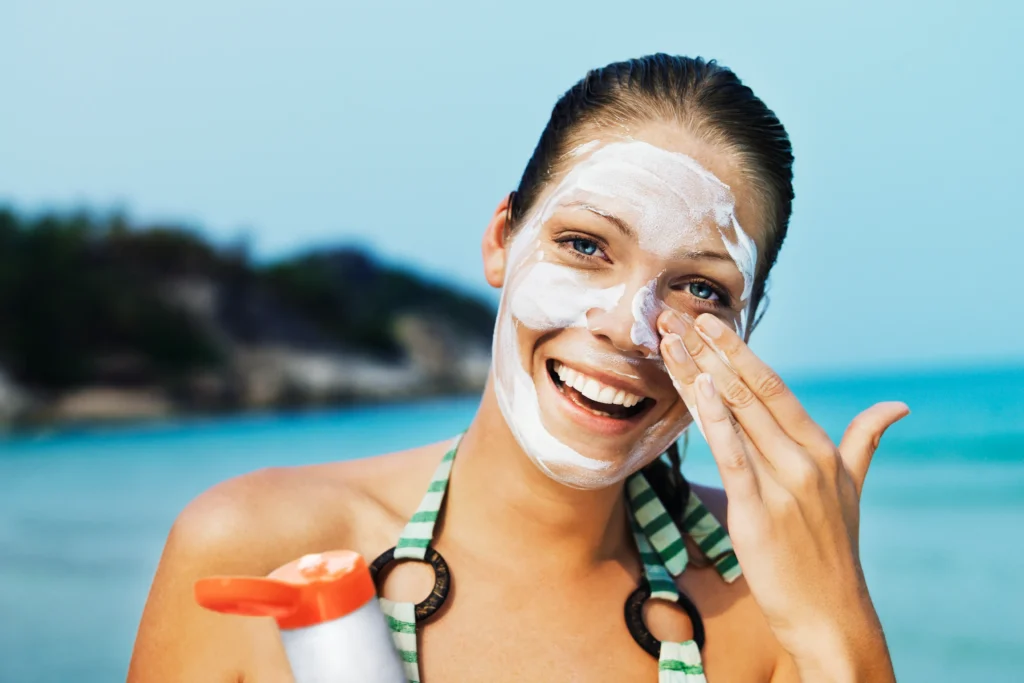
Nearly every single person has to step into the bright sunlight for all sorts of reasons. Many of them love doing so, but no matter how much fun and joy it is, one must never forget the ill effects that direct sunlight can do to your skin. But no worries, because almost all of that can be prevented if you use sunscreen every time you step out.
Sunscreens are designed to protect the skin from the harmful radiations from the sun, such as UV – A and B. There are many types of sunscreens available in the market for the various kinds of skin types. You should always do your research and try out a few types before choosing what suits you best. However, mineral sunscreen is the most preferred because of its low chemical content.
It is a no-brainer that mineral sunscreens are far better than chemical ones, not only for the skin, but also for the environment. However, there are a few things that you should keep in mind whilst purchasing a mineral sunscreen for yourself, a few of which are mentioned below for your reference:
1. What Is Mineral Sunscreen

Mineral, or physical sunscreen is a formula that is used to deflect the sun’s harmful UV rays away from the skin. These are applied on the skin, and are not absorbed by the body, and hence the name physical sunscreen. They are required to be applied once in every couple of hours, as the ingredients are not active for a very long time. They are also a safer alternative to chemical sunscreen because they do not take up the bloodstream of the user like the chemical ones.
Additionally, chemical sunscreens are known to be toxic if disposed of in water bodies, and cause massive disruption to coral reefs.
2. Know The Key Ingredients
Knowing the major ingredients in your sunscreen and how they work is a good way to start things up. Almost all physical sunscreen uses either of the two minerals – titanium dioxide, or, zinc oxide. Both of these are known for their properties to reflect the UV rays from the sun, and are not absorbed into the skin.
Additionally, they have been cleared for use by the FDA recently, meaning there is no evidence of these ingredients causing any sorts of long term complications.
3. How Does It Work?

These sunscreens’ active ingredients are known to reflect off the sunlight and the UV rays along with it. There is usually no chemical reaction going on between the skin and the rays, and thus, it does not heat up your skin like chemical sunscreens.
Additionally, these do not generally clog up the natural pores present in the skin, making it much easier to get them completely off of the skin.
No two people are made the same. The same applies to the skin as well. Usually, these physical sunscreens act as a barrier and do not stir up any sort of inflammation or promote acne. But if you feel something is up, then it is advised to discontinue the product and see a dermatologist.
4. Reapplication Is The Key

It would not matter how safe it is to use mineral based sunscreen if you forgot to reapply the same every two hours. The components are active for only two hours of application, and therefore, it becomes quite a task to reapply the same.
Also, mineral sunscreens are not absorbed by the skin, thus making it quite hard to blend it in completely. Therefore, there is a high possibility that one application of the same would leave your face and body chalky and appear whiter than usual.
5. Say No To Sprays
Titanium dioxide, the key ingredient used to make these sunscreens, has been proven to be carcinogenic in humans, if inhaled or ingested in any form. Therefore, using these sunscreens in the form of sprays and aerosols could be a bad idea. Moreover, there is not enough data available presently for the health concerns of zinc oxide, thereby making it quite unstable for the moment. But one thing is for sure, no to very little amount of these ingredients penetrate through the skin when applied externally to reach the live tissues underneath, thereby eliminating the risk of them being carcinogenic.
Other Ways To Prevent From The Sun

1. Something Is Better Than Nothing
You can use chemical sunscreen if for some reason physical ones are not available or do not suit you. They are still a far better option to consider, rather than stepping in the Sun with no protection. They work out just as fine as physical ones and are much easier to blend and leave no whiter tones or chalky outlines. Moreover, it is found that users who have an acne prone skin type, experience lesser acne breakouts if they mix chemical and physical sunscreens.
2. Change Your Timings
If you can control it, then consider leaving your place before 9 AM or after 4PM, as these are the peak hours of direct sunlight. Of course, these would vary a bit, considering your geographical positioning on the globe, but this remains the same for the majority of the world.
3. Cover Up When In Sun
Showing no to the absolute low amount of skin possible in the sun is one of the prehistoric ways to save yourself from the harmful rays. But it is effective. If you cover up your sleeves and time your outings properly, then it is a good possibility that you would not have to use sunscreen on a regular basis.
Conclusion:

If you are getting out, and the sun is shining, then wear sunscreen. That’s it. That is the bottom line. It does not matter if you do not have a physical sunscreen available, use a chemical one. However, it is advised to use the ones with as low chemical content as possible, to save your skin and the environment as well. And yes, do not forget to reapply the same once in every couple of hours for maximum protection.








